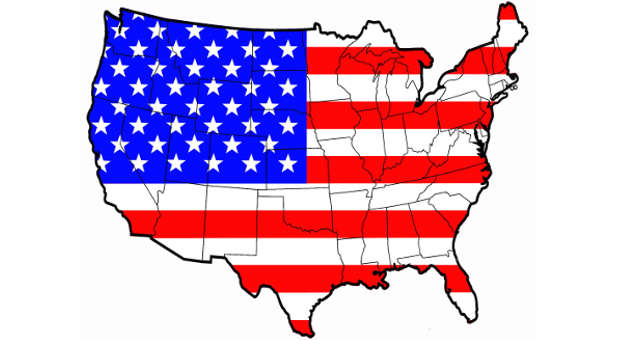25 Percent of Americans Want Their State to Secede
For the past few weeks, as Scotland debated the wisdom of independence, Reuters has been asking Americans how they would feel about declaring independence today, not from the United Kingdom, but from the mother country they left England to create. The exact wording of the question was, “Do you support or oppose the idea of your state peacefully withdrawing from the United States of America and the federal government?”
It was hard to imagine many people would support secession. Forget the fact that the cautionary lesson of the Civil War is top of mind for many people as we commemorate its 150th anniversary; just in terms of dollars and cents, who in their right minds would give up all the money they’ve already paid into the Social Security and Medicare systems? Besides, most states get more back from the federal government than they put in.
Then the results came in. You can see them for yourself here, and you can filter them any way you want—by age, region, income, party affiliation, etc. Any way you slice it, the data are startlingly clear: Almost a quarter (24 percent) of those surveyed said they were strongly or provisionally inclined to leave the United States. And take their states with them. Given the polling sample—about 8,600 people so far—the online survey’s credibility interval (which is digital for “margin of error”) was only 1.2 percentage points, so there is no question that that is what they said.
Secession got more support from Republicans than Democrats, more from right- than left-leaning independents, more from younger than older people, more from lower- than higher-income brackets, more from high school than college grads. But there was a surprising amount of support in every group and region, especially the Rocky Mountain states, the Southwest and the old Confederacy, but also in places like Illinois and Kansas. And of the people who said they identified with the Tea Party, supporters of secession were actually in the majority, with 53 percent.
Scottish unionists won by a wider-than-expected 10-percentage-point margin.
The question is, what do results like this mean for the country?
First, it should be acknowledged that intramural conflict has been in character for Americans since the earliest settlements, when Puritan New England faced off against Royalist Virginia in the English Civil War. More than a century later, the Revolutionary War was barely won when the states, never quite friendly, were at each other’s throats, and the infant nation came close to being strangled in its crib.
It was in part to avoid the danger that the colonies would break into competing regional confederacies that the founders plotted to hold the Constitutional Convention of 1787. But even when the new Constitution made secession illegal, the impulse to break up stayed strong. Serious state and regional threats of secession flared up in 1799, 1814 and 1828. Fifteen years before 11 Southern states did secede in 1861, sparking the Civil War, William Lloyd Garrison called for the North to secede under the banner of “No Union With Slaveholders.”
All told, secessionist feints and follies have produced notional movements for more than a hundred new states and nations in North America, from Absaroka to Yazoo. A book about such causes, “Lost States,” manages to be quite amusing.
Followup phone calls with a small, random sample of pro-secession respondents to the Reuters poll, however, suggest that while their wish to leave the union may not be quite what it appears, it is not amusing at all.
Those we spoke to seemed to have answered as they did as a form of protest that was neither red nor blue but a polychromatic riot—against a recovery that has yet to produce jobs, against jobs that don’t pay, against mistreatment of veterans, against war, against deficits, against hyper-partisanship, against political corruption, against illegal immigration, against the assault on marriage, against the assault on same-sex marriage, against government in the bedroom, against government in general—the president, Congress, the courts and both political parties.
By the evidence of the poll data as well as these anecdotal conversations, the sense of aggrievement is comprehensive, bipartisan, somewhat incoherent but deeply felt.
This should be more than disconcerting; it’s a situation that could get dangerous. As the Princeton political scientist Mark Beissinger has shown, separatist movements can take hold around contempt for incumbents and the status quo even when protesters have no ideology in common.
The United States hardly seems to be on the verge of fracture, and the small secession movements in a handful of American states today represent a tiny percentage of those polled by Reuters. But any country where 60 million people declare themselves to be sincerely aggrieved—especially one that is fractious by nature—is a country inviting either the sophistry of a demagogue or a serious movement for reform.
The opinions expressed here are those of the author, a columnist for Reuters.
© 2014 Thomson Reuters. All rights reserved.




























































